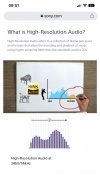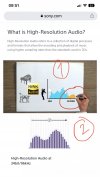I undertand hi res audio is Not something which would have an audible difference. Let’s ignore that now, and can anyone explain why Sonys website has two diagrams contradicting to each other here?
Above shows hi resolution means you have some information added above 20khz!
Below one shows how the audible range itself is sampled 192 times, instead of 44 samples.
Out of the two what exactly is the theoretical hi res?
Above shows hi resolution means you have some information added above 20khz!
Below one shows how the audible range itself is sampled 192 times, instead of 44 samples.
Out of the two what exactly is the theoretical hi res?


